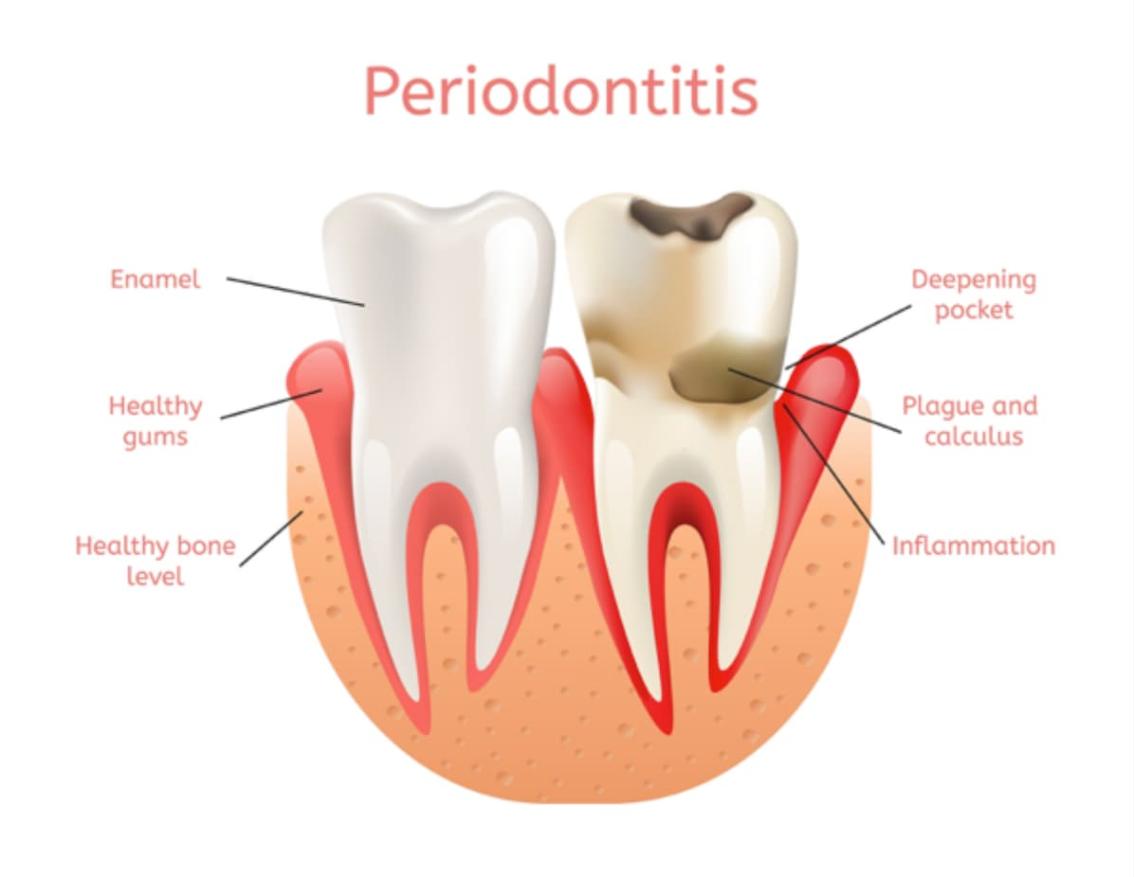Periodontal therapy plays a vital role in maintaining optimal oral health and preventing the progression of gum disease. At Ideal Medical Center - Al Ain, we understand the importance of gum health and offer comprehensive periodontal therapy services to our patients.
What is Periodontal Therapy?
Our Periodontal Therapy Services

Why Choose Us?
1. Expert Periodontists: Our team of skilled periodontists have years of experience in diagnosing and treating gum diseases. They stay updated with the latest advancements in periodontal therapy to provide you with the highest quality of care.
2. Personalized Treatment Plans: We understand that every patient is unique, and we tailor our treatment plans to meet your specific needs. Our periodontists will thoroughly evaluate your condition and work closely with you to develop a personalized treatment plan that suits your oral health goals.
3. State-of-the-Art Facilities: We are equipped with advanced dental technology and tools to ensure precise and effective periodontal therapy. Our modern facilities provide a comfortable and relaxing environment for your treatment.
4. Comprehensive Dental Care: Our practice offers a wide range of dental services under one roof. Whether you require periodontal therapy, general dentistry, orthodontics, or cosmetic procedures, we have the expertise to address all your dental needs.

Take the First Step Towards Healthier Gums
If you are experiencing symptoms of gum disease or are concerned about your gum health, don't wait to seek treatment. Our periodontal therapy services can help restore the health of your gums and preserve your smile for years to come. Contact us today to schedule an appointment and take the first step towards healthier gums and improved oral well-being.
Our Process
Contact Us
Thru Phone, Website
& Mobile Application ...etc
Book
Appointment
For Free Consultation
Receive Your Treatment Plan
Printed Or Via Mobile Application
Start your
Treatment
FAQ
Gum disease involves the inflammation of the gums
It is caused by the build-up of bacterial plaque in the mouth, which leads to an inflammation of the gum line, known as gingivitis. If this is not treated, the inflammation can spread to the bones and other structures that support the teeth, which leads to the more serious disease of periodontitis. “Pockets” may form in the gums, where harmful bacteria can accumulate and provoke more inflammation, leading to bone loss. As a result, teeth become loose and may eventually fall out.
In the case of implants, bacterial plaque leads to an inflammation of the gum around the implant (peri-implant mucositis) which, if left untreated, can quickly lead to the more serious condition of peri-implantitis, which involves bone loss and can eventually mean the loss of the implant.
Bacterial plaque on the teeth can provoke the inflammation of the gum line, a condition known as gingivitis. The gums (the gingiva) react to the presence of dental plaque by becoming inflamed – and this can happen after only a few days.
This inflammation – usually involving reddened or swollen gums – is the body’s response to the bacteria that have been allowed to accumulate on the teeth.
Gingivitis is a common inflammation. If optimal oral hygiene at home is practiced and if the bacterial plaque is removed regularly, gums can recover within a few days.
However, if gingivitis is not addressed, the symptoms can worsen and lead to the more serious gum disease of periodontitis.
During pregnancy, there is an increased tendency for gingivitis because of hormonal changes. Pregnant women should pay special attention to good oral hygiene and see a dentist at an early stage during their pregnancy
Periodontitis is a gum disease. It is a chronic inflammatory disease that is triggered by bacterial microorganisms and involves a severe chronic inflammation that causes the destruction of the tooth-supporting apparatus and can lead to tooth loss. It can also lead to other health problems.
Periodontitis always begins with inflammation of the gums, known as gingivitis. This inflammation – usually involving reddened or swollen gums and bleeding when brushing teeth or biting on food – is the body’s response to bacteria that have been allowed to accumulate on the teeth.
This inflammation can then spread to below the gums and along the roots of the teeth. This can cause permanent damage to the tissues (or “periodontal ligament”) around the teeth and to the supporting bone. Teeth start to loosen and can eventually be lost.
This can then lead to problems with chewing food and with speaking, as well as causing aesthetic damage to your smile.
In many people, this is a gradual process that takes place over many years. However, some young adults have a very active form of the disease, which causes early loosening and loss of the teeth. Around 40 percent of people suffer from periodontitis. Among adults, it is estimated that around 70% of tooth loss is caused by periodontitis.
The good news is that – if detected and treated – the process can be halted and gum health can be restored.
The word “periodontitis” comes from “periodontium”, which means “surrounding (peri) the tooth (odont)”. The periodontium includes all the components that hold the tooth in the jawbone: the gum (gingiva), the bone, the anchoring fibres, and the anchoring structure on the surface of the root (cementum). In a healthy tooth, the periodontium surrounds the entire root.
Periodontitis always begins with inflammation of the gums, known as gingivitis. One of the first signs is that your gums bleed when you brush your teeth. The gums may look red and swollen and you might notice a discoloured layer of bacterial plaque on the teeth. If not removed through proper cleaning of the teeth, this plaque will become “mineralised”, turning into hard deposits known as calculus or tartar, which cannot be removed by a toothbrush.
Left untreated, gingivitis may turn into periodontitis, a more serious form of gum disease. Often this happens without any obvious signs to alert you, but you might notice changes such as:
-
Increased bleeding from the gums, which may be provoked by tooth-brushing or eating, or may even be spontaneous.
-
Bad breath.
-
Changes in the positioning of the teeth in the jaws.
-
Teeth appear “longer” (receding gums).
-
Pain.
In smokers, gum bleeding may be less noticeable. This is because of the effect of nicotine on blood vessels and means that the progress of the disease may be hidden.
People do often not notice the presence of periodontitis until they are 40 or 50 years old, by which time a great deal of damage may have occurred. However, a dentist can detect signs of the disease much earlier, during a routine dental examination, and can monitor your periodontal status by using a tool called the Periodontal Screening Index. You should ask your dentist for a periodontal examination as part of your regular dental check-ups.